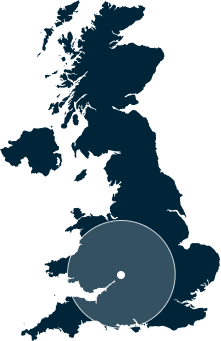If you’re choosing specialist seating for the first time, it can be mind-boggling to understand the differences between the brands and makes and models of chairs available. In this blog, we look at Kirton seating and explore the uses and benefits of Kirton chairs.
What are Kirton chairs?
The Kirton range of specialist seating is well-regarded in the industry for providing functionality and comfort to users with complex neurological needs. The chairs are ideal for a range of clients who suffer from conditions such as dementia, Huntington’s Disease, Motor Neurone Disease, brain injury or stroke recovery. These high quality specialist chairs have been designed to prioritise user wellbeing and aid rehabilitation.
What are the benefits of Kirton chairs?
To help you get a clearer idea about whether a Kirton chair is the right option for you, we’ve highlighted 5 key benefits of Kirton chairs and the models that feature them.
1. Fully adjustable parts
The Kirton range of specialist chairs can be fully adjusted to suit a client’s size and shape. Most have seat pads with an adjustable width and length function, and some, such as the Kirton Encora chair, have seat height adaptations so you can accommodate taller or shorter clients. This ability to lower the seat so the feet are resting on the ground also helps clients with rehabilitation.
The Kirton Duo is the most adjustable chair in the range. This makes it an exceptionally good chair for clients with complex seated needs. The chair comes in three sizes and all are fully adjustable. As well as the seat width, users can adjust the seat depth which helps accommodate people with different leg lengths. The armrest height, backrest height and footplate height can all be adjusted on the chair without the use of tools to provide the correct support for a wide range of clients.
2. Enhanced postural support
The Kirton range of specialist seating provides excellent support for clients with neurological conditions thanks to the enhanced postural support features. The Kirton Omega was originally designed for people with Huntington’s Disease but is a good choice for anyone with excessive limb movements and who struggles to sit for periods of time.
Many of the Kirton chairs come with the option of a sculpted support backrest or a waterfall backrest which increases comfort and postural support. The Kirton G-2 features integrated postural supports that move down and over the client’s pelvis to support them laterally. The Kirton Encora chair features an independent back recline which opens up the hip and back joints for a more comfortable resting position.
The headrests on Kirton chairs are also highly adaptable. The headrest on the Kirton Duo has been designed to accommodate very complex postural needs. It features a split-wing headrest in three sections which can all move independently to create a range of support, through a ‘pivot’ or ‘trombone’ action. The ends of the headrest can also be folded in to offer even greater support for the neck and head.
3. Tilt-in-Space functions
In a recent blog, we looked at what Tilt-in-Space specialist chairs are and how they can support elderly patients. But it is not just elderly patients who can benefit from the function. Tilt-in-Space is ideal for all clients who are sitting for long periods of time as they can help to reduce pressure sores. The Tilt-in-Space motion allows the whole chair to tilt into a reclined position, redistributing weight across the pressure points while keeping the hips and back at an optimum angle.
Many of the Kirton chairs have Tilt-in-Space functions. These range from manual Tilt-in-Space such as on the Kirton Florien II, where the carer uses a lever to tilt the chair, to electric Tilt-in-Space chairs such as on the Kirton Encora which the user can operate using a switch. There is also the option of regulated motion Tilt-in-Space on Kirton Duo and Kirton-2 chairs which automatically tilts the chair at intervals during the day so there is no burden on the carer or client to operate the function.
4. Superior comfort
Kirtan chairs are all designed to offer supreme comfort for users. The chairs have fully adjustable parts that are designed to bring comfort and a sense of wellbeing to different users. The Kirton G-2 and Kirton Florien II have an articulated integrated head support that can be moved forward or backward to support the shoulder girdle. Many of the Kirton chairs also feature an arcing footrest which moves up and away from the chair to maintain leg length and the correct angle and support at the knees. Negative angle footrests also tilt back and under the chair making it more comfortable for people with tight knee contractures.
When it comes to seat comfort, there are several options for different types of pressure relief in Kirton chairs: Dyna Flex, Intelli-Gel, Dyna-Tek or Dyna Flex. Alternatively, clients can choose to add their own seating cushion for comfort.
5. Practical as well as stylish
Kirton chairs come in a range of colourways and designs that work well in hospice and residential settings and also in domestic homes. Chair parts, such as the seat, arms and back are modular, which means items can be repaired, replaced or decontaminated as needed – this is an option we offer as standard on our Kirton chair rental service – you can find out more in our blog on how to revitalise your specialist seating. Another practical feature on many Kirton chairs, such as the Kirton Florien Elite and Kirton Florien II, is that the armrests can be removed or adjusted to help with the side transfer of patients.
How to choose the right Kirton specialist chair
Our seating experts have over 20 years of experience working with major brands of specialist seating such as Kirton. To help you understand which seat is right for your needs, we offer a free seating assessment and a free trial in our Demo Centre in Gloucestershire. Get in touch with us to arrange the next steps.









